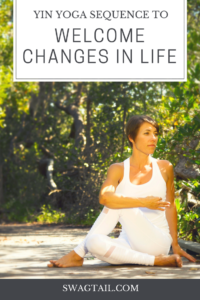
Change is an inevitable part of the human experience, and we can use this yin yoga sequence to welcome changes in life. Growing up, I often forced changes in my life through willpower and the need to control my environment. This sense of urgency was spurred on by the death of my father when I was 13 years old, and I thought I must get the most out of life now. I didn’t want to waste a single moment or opportunity.
However, it wasn’t until I found yoga–and really yin yoga–that I began to understand that taking a more graceful, quiet path to change is a more powerful way to elicit the changes I wanted to experience in my life. When you spend time in stillness, clarity is created in the mind. It also allows the body to open softly and remove any inner resistance to the unknowns of the future. With the mind, body, and heart on board, you’ll be able to truly welcome the great changes that are sure to come forth on your journey ahead.
Photo Credit: Jina Morgese
CHANGE AND THE BODY
The body, in its infinite wisdom, is always ready to process change and does so automatically to retain a sense of equilibrium. If a trauma occurs, such as cutting your finger, new collagen fibers form to mend the damage. This results in scar tissue. Yet, we also undergo emotional trauma, and many times the aftermath of such wounds are not seen immediately. This internal scarring can remain as energetic blocks in the body, eventually causing organ and tissue dysfunction. Chinese medicine used qi points and meridians to discover these blocks
Recently, we’ve also been able to use electrodes on the body to discover where certain types of emotional stress get stored. Emotions are vibrations which are sensed by your electromagnetic field, and despite our individual differences, humans tend to store similar types of stress in specific areas of the body. For example, someone who worries a lot tends to harbor that stress in the hips. Or, If someone is anxious or uncertain about the future, this stress is stored in the side body and lungs. This very same area also gets affected when one lacks trust in the decisions they are making.
Thus, this yin yoga sequence to welcome changes in life focuses on opening up these side areas. With each posture and breath you take, you release stuck emotional stress about the future. And, you’ll develop the confidence to make decisions moving forward.
To prepare for the sequence, grab a block and blanket.
START IN SAVASANA – KNEES BENT
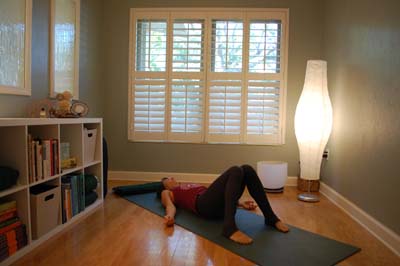
Begin the sequence, lying on the back with the knees bent and the soles of the feet on the floor. Allow the knees to remain parallel, or have them drop inward toward one another. Feel the natural curvature of the spine, and the breath effortless. You have the option to leave the hands by the side of the body, or bring the hands to the ribcage. If the second option is taken, let the elbows rest on the ground.
Length: Center here for 2-5 minutes, depending on how much breath-work you want to use here.
POSTURE 1: RECLINED FIG 4 OPEN TWIST
Specific Instructions: Externally rotate the right leg, bend the knee, and cross the ankle on the left thigh just above the knee. Once in reclined figure four with the left foot on the ground, roll into an open twist. This means the knees will remain in this exact position as the knees drop over to the right. Place a block and/or blanket under the right leg for support.
Purpose: This begins to open the entire left side of body.
Length: Hold here for 3-5 minutes on the first side, then return back to a neutral spine with knees bent and both feet on the floor again. After a few rounds of breath, repeat on the second side for the same length of time. This begins to open the entire left side of body.
Counter Pose:
Take a minute or so in corpse pose to rest the body. Notice how the sides of the body have already begun to lengthen. Observe any thoughts in the mind, and consider how the quality of those thoughts might have already begun to shift from external distractions to an inner focus. Taking savasana throughout the practice will allow you to cultivate awareness about your current state, as well as the changes that are already well underway.
POSTURE 2: SIDE BODY STRETCH
Specific Instructions: Roll on to the right side of the body, and place the right elbow just under the right shoulder. The goal is to be in one straight line with the body. However, students can bend the knees to make the posture more comfortable. Remember, yin yoga is only designed to go 50-70% of our maximum. Push the right forearm and right elbow into the ground and allow the right side of the body to drape comfortably toward the floor.
Purpose: The extended time in this side body stretch really allows the space around the lungs to open. This is also a very grounded pose with the hips and legs on the ground.
Length: Hold for 3-5 minutes.
POSTURE 3: RECLINED SPINAL TWIST
Specific instructions: From the side body stretch, begin to lie down on the right side and place the right forearm under your head like a pillow. Extend the left arm vertically toward the ceiling, and move the shoulder joint around in a few circles. Then, keeping the right shoulder on the ground, open the body into a twist. The knees will be bent to the right, and the right arm can remain under the head or extend out at a T position. Try and keep both shoulders on the floor, even if that means propping up the knees with a blanket or block
Purpose: The length created in the side body in posture 2 can now be taken further into a twist. The groundedness of the hips and shoulders can also help to turn the attention more inward still. And, the deeper breaths into the twisted shape release any stored stress.
Additional support:
- Place block or blanket under knees
Length: Hold for 5 minutes, then pause in Savasana before moving on to Posture 4.
POSTURES 4-5: LEFT SIDE STRETCH AND TWIST
Specific instructions: Repeat postures 2-3 on the second side. Let the left side sag like a hammock toward the ground in the side stretch, then take the spinal twist to further lengthen that left side. Make sure to take the arms circles with the right arm toward the sky before settling into the twist.
Additional support:
- Place a blanket under the elbow and forearm in the side stretch, as needed
- Support the knees in the twist so that both shoulders can remain on the floor
Length: Hold the side stretch for 3-5 minutes and the twist for 5 minutes. Said another way, hold each pose for the same length of time as taken on the first side.
Counter Pose:
There is no resistance in this pose here, and this mirrors the sense of ease we want to take into all areas of life. Continue to focus on thoughts that allow this yin yoga sequence to welcome changes in life. Once done, hug the knees into the chest and roll side to side. You can move through seated to get into the next pose, or simply roll onto the belly from there.
POSTURE 7: SPHINX

Specific instructions: Let the front of the pelvis remain on the ground, with feet hip distance apart and the tops of the feet to rest on the ground. Make sure the elbows stack directly under the shoulders, and allow the forearms to remain parallel. Drop the shoulders away from the ears. Lift the heart toward the chin and gaze slightly forward. You can now directly look into the unknown with confidence.
Purpose: Both sides of the body have been lengthened independently in the previous poses. Sphinx has symmetry on both sides of the body now, and allows the length that has been created to move into more space in the back and heart.
Additional support:
- Use a block between the forefingers and thumbs to ensure the shoulders are just over the elbows
Length: Hold for 1-2 minutes.
POSTURE 8: FOREARM PLANK
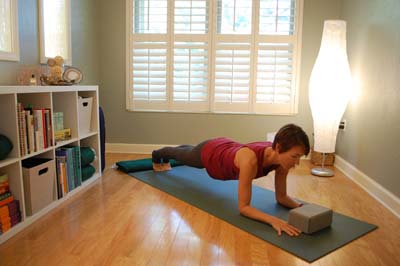
Specific Instructions: Press the forearms into the floor, tuck the toes under, engage the quadriceps, and lift the hips off of the ground to come into forearm plank.
Purpose: This strength-based posture is a counterbalance to the more passive sphinx. This also engages your courage to step into the unknown.
Additional support:
- Drop the knees to make the pose a bit easier.
- Place a block between thumbs and forefingers to retain focus and pressure all the way out through the hands.
Length: Hold for 1 minute.
OPTIONAL: REPEAT POSTURES 7 &8 ONCE MORE EACH
POSTURE 9: BALASANA
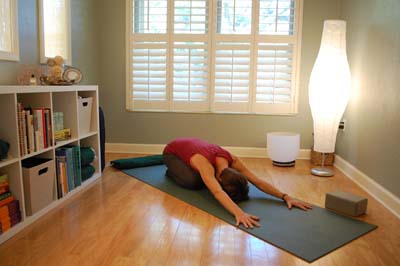 Specific Instructions: Keep the knees on the floor (either together or wide) and move the hips back to the heels. Allow the spine to round, and the forehead to rest on the ground or a block.
Specific Instructions: Keep the knees on the floor (either together or wide) and move the hips back to the heels. Allow the spine to round, and the forehead to rest on the ground or a block.
Purpose: Again, both sides of the body are of equal length here. Breathe into both sides evenly, and then send that breath into the back side of the body. This also reminds you to rest, and allow the changes you’ve made to resonate within the body. Said another way, the new space you have created increases the energetic flow in those areas. A resting pose allows that new energy to flow effortlessly within your being.
Length: Hold for 1 minute.
POSTURE 10: ARDHA MATSYENDRASANA
Specific Instructions: Start in dandasana, and bend the right knee in toward the chest. Step the right foot to the outside of the left leg and begin to twist over to the right. Keep the sit bones grounded, and the spine tall. To increase the intensity of the stretch, you can bend the left knee into the full version of ardha matsyendrasana.
Purpose: The space created in the body can now be taken into a twist to release any remaining resistance.
Additional support:
- Place a block under the sitting bones to help the pelvis rock slightly forward.
- Place a blanket under the knee of the left leg if the hamstrings are still tight.
Length: Hold for 3-5 minutes before repeating on the second side. After the second side, it can be beneficial to pause in dadanasa (or even take savasana) before moving to the next postures.
POSTURE 11: DEER POSE
Specific Instructions: Turn slightly to face the left side of the mat. Bend the right knee, and have the right shin parallel to the left side of the mat. The left leg will slightly internally rotate as the back knee also moves to a 90 degree angle, making the left shin parallel to the back, short edge of the mat. Keeping the right hip on the ground, begin to rotate the torso back to face the front of the mat. You can keep the hands on the floor and the arms extended. This will keep the torso higher. Or, you can slowly extend the heart away from the right hip and lower on to the forearms or props.
Purpose: Any worry about the future that is stored in the hips will get some attention here. Both hips have a chance to release tension, and the additional benefit of a spinal twist comes into play to wring out any last bits of stress.
Length: Hold for 3-5 minutes before repeating on the second side.
Counterpose: Create some movement in the hip joints here by moving the legs in windshield wiper. You can stay upright to do this, or come on to elbows or even flat on the back.
END THE SEQUENCE IN SAVASANA
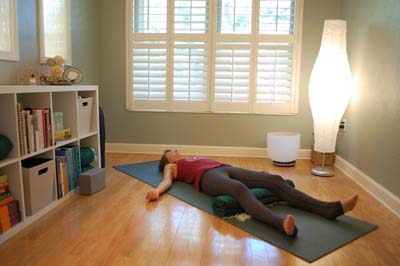 Support yourself in any way possible here to end the sequence. Place a rolled blanket under the knees. Cover yourself in the blanket to stay warm. Create a support beneath your head or neck. The ending of your sequence is incredibly important because it’s the time to internalize the body changes at the cellular level. It also becomes the transition point from your practice to whatever is next in your day. Since this practice was designed to let go of internal stress with regards to the future, the extra time in stillness can add more clarity about intentions or insights about one’s life. Milk the satisfaction of not needing to jump into that action yet, though. Savor the feeling of comfort and knowing and confidence developed in this yin yoga sequence to welcome changes in life. Your body and mind can then memorize those new sensations as you roll up your mat and consciously embrace what’s next.
Support yourself in any way possible here to end the sequence. Place a rolled blanket under the knees. Cover yourself in the blanket to stay warm. Create a support beneath your head or neck. The ending of your sequence is incredibly important because it’s the time to internalize the body changes at the cellular level. It also becomes the transition point from your practice to whatever is next in your day. Since this practice was designed to let go of internal stress with regards to the future, the extra time in stillness can add more clarity about intentions or insights about one’s life. Milk the satisfaction of not needing to jump into that action yet, though. Savor the feeling of comfort and knowing and confidence developed in this yin yoga sequence to welcome changes in life. Your body and mind can then memorize those new sensations as you roll up your mat and consciously embrace what’s next.


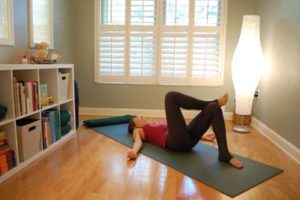
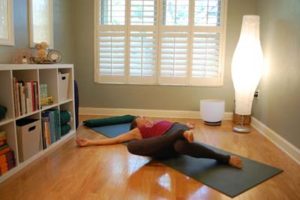
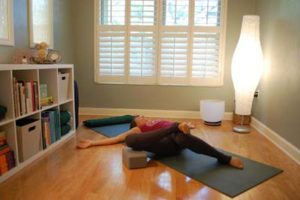
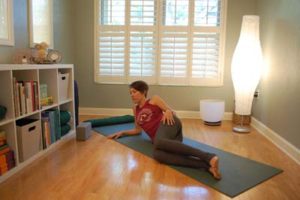
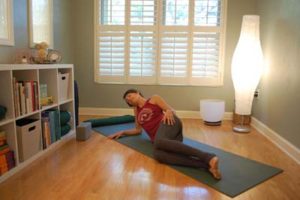
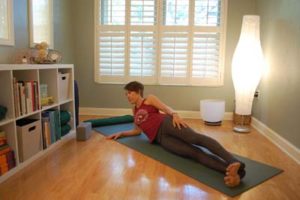
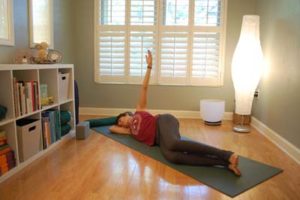
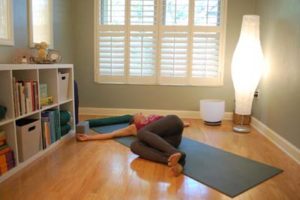
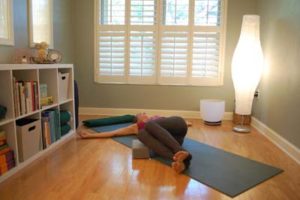
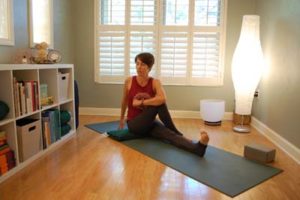
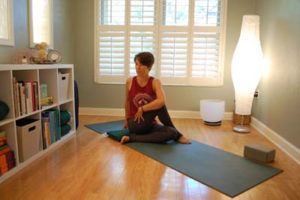
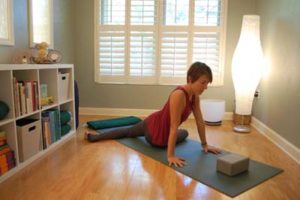
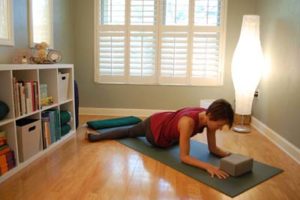
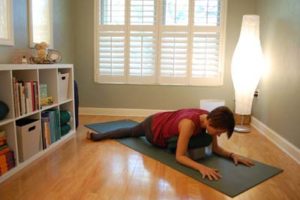


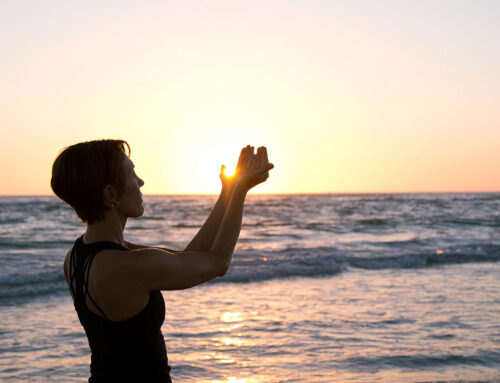
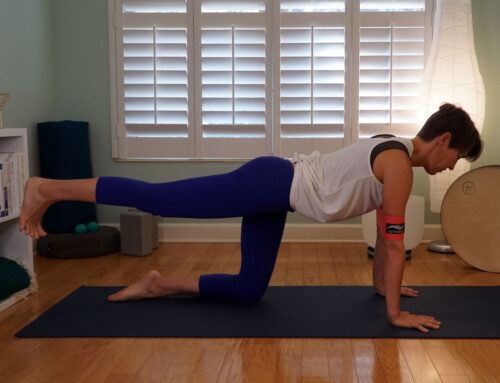
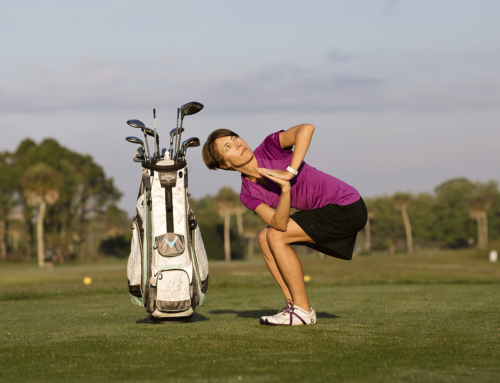
Leave A Comment